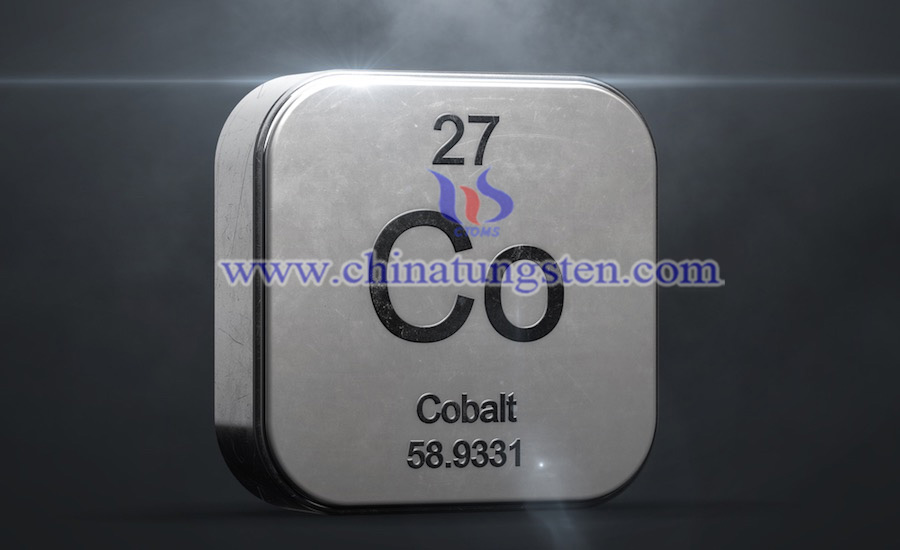Cobalt Doped Ammonium Paratungstate (APT) Precursor by Thermochemical Decomposition
- Details
- Category: Tungsten Information
- Published on Friday, 12 June 2020 06:07
Tungsten carbide cobalt (WC-CO) is an alloy of a hard ceramic phase, tungsten carbide (WC) and a ductile metallic phase, the cobalt (Co). Significant properties of WC-Co are hardness, strength, high breaking and beating ductility as well as high electrical and thermal conductivity. By varying the cobalt content between 0 and 20 mass per cent, hard metals can cover a hardness range from tempered steel to super-hard alloys. From hard metals, mainly tools are produced for chipping (turning, milling, drilling) or non-chipping shaping (drawing, rolling, spinning), as well as for cutting or breaking of metals, wood, stone, and ores. Applications of WC-Co in life include surgery equipment, nozzles or reinforcements, small balls in ball pens, hard metal driller, and hard metal coated circular saw blades.
In the conventional method of producing WC–Co materials, tungsten carbide powder obtained from the reduction of tungsten is mixed with cobalt by milling, and then followed by crushing, pressing, and sintering to form sintered products. Currently ammonium paratungstate (APT) is the dominating raw material used for the manufacture of tungsten-based products. Tungsten powders are prepared by hydrogen reduction of APT as well as tungsten blue oxide (TBO) or other tungsten oxides obtained from APT.

To clarify the influence of calcination parameters, a synthesis steps of cobalt doped ammonium paratungstate precursor by thermochemical decomposition has been developed:
APT (>99%) and cobalt hydroxide (>95%) were used as starting material. The precursor with W/Co ratio of 4.7 was synthesized. Both salts are slightly soluble and were suspended in a stirred reactor containing water. The reaction mixture was heated to 90◦C for 3h. After the reaction was completed, the solid powder formed was filtered off, washed with de-ioned water and dried in air at 105◦C. Composition and phase constituent were carried out on the formed powder by chemical analysis and X-ray diffraction (XRD), and it has been found that powder with W/Co ratio of 4.7 has a general composition.
The precursor was calcined at several constant temperatures between 220 and 650 °C for 5h. The calcination was carried out in a tube furnace. The heating rate of the samples from room temperature to the calcination temperature was 5°C/min. A gas flow rate of 800ml/min was used during calcination. Air and nitrogen used in the study had purities of >99.99% (Air Liquid Company, Sweden).
The resulting powders were investigated using scanning electron microscopy, X-ray diffraction, thermogravimetric analysis (TGA), differential TGA, BET, and mass spectrographic analysis techniques.
In short, nanostructured powders with particle size of around 80 and 90 nm can be obtained after calcination. The precursor decomposes into CoWO4 and WO3 oxides at 520◦C in air after a weight loss of 10.3%.
To achieve the smallest particle size, the calcination temperatures of 320 and 450◦C are suggested under non-flowing air and flowing air, respectively. The calcination of the powder can be controlled to produce an amorphous powder or crystalline powder at the same temperature by varying the gas phase composition during the calcination in medium temperature range. The decomposition of the precursor at medium and high temperatures varied with the gas phase composition due to the effect of different oxygen content in the gas phase. The higher oxygen content could accelerate the decomposition of the precursor. The decomposition of the precursor finished at the lowest temperatures in flowing air, while the decomposition of the precursor finished at higher temperatures in flowing nitrogen.
- APT Manufacturer & Supplier, Chinatungsten Online: ammonium-paratungstate.com
- Tungsten News & Prices of China Tungsten Industry Association: www.ctia.com.cn
- Molybdenum News & Price: news.molybdenum.com.cn
- Tel.: 86 592 5129696; Fax: 86 592 5129797; Email: sales@chinatungsten.com



 sales@chinatungsten.com
sales@chinatungsten.com